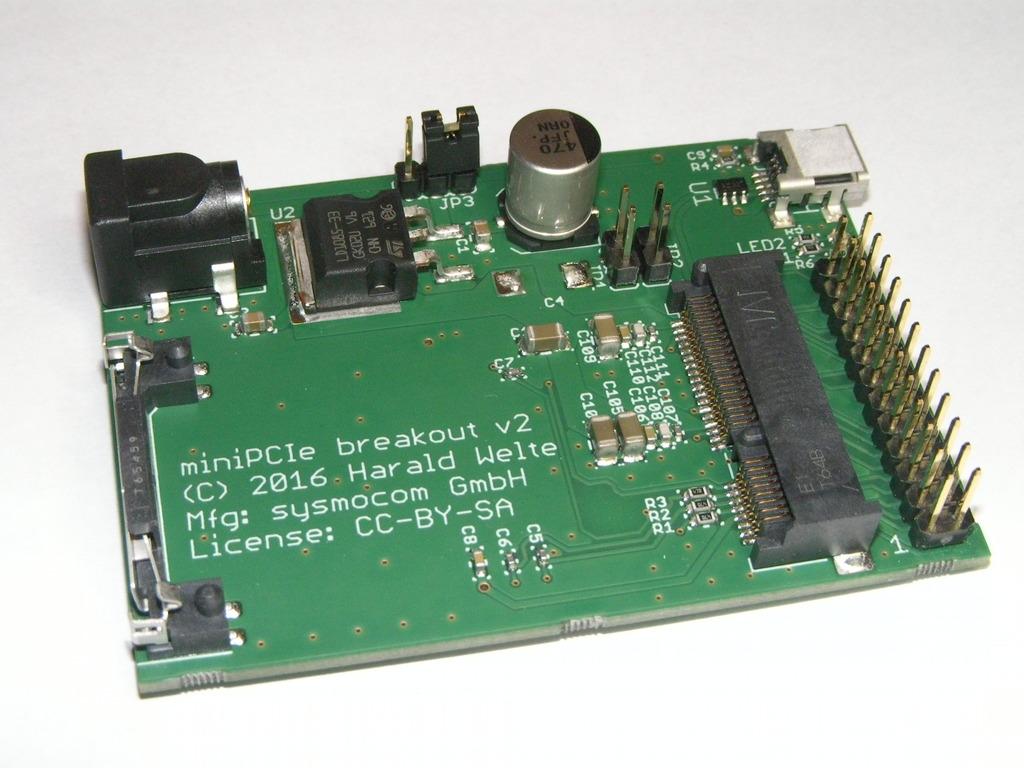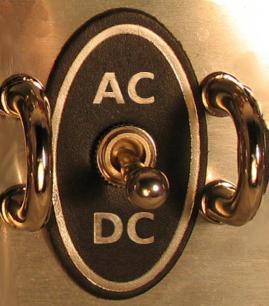Feed SparkFun Electronics [copy] http://www.sparkfun.com/feeds/news has loading error: cURL error 22: The requested URL returned error: 405
Feed The RFID Weblog [copy] http://www.rfid-weblog.com/index.rss has loading error: cURL error 22: The requested URL returned error: 404 Not Found
Feed tqfp.org [copy] http://tqfp.org/rss/ has loading error: A feed could not be found at `http://tqfp.org/rss/`; the status code is `200` and content-type is `text/html; charset=utf-8`
Open Hardware miniPCIe WWAN modem USB breakout board released

There are plenty of cellular modems on the market in the mPCIe form factor.
Playing with such modems is reasonably easy, you can simply insert them in a mPCIe slot of a laptop or an embedded device (soekris, pc-engines or the like).
However, many of those modems actually export interesting signals like digital PCM audio or UART ports on some of the mPCIe pins, both in standard and in non-standard ways. Those signals are inaccessible in those embedded devices or in your laptop.
So I built a small break-out board which performs the basic function of exposing the mPCIe USB signals on a USB mini-B socket, providing power supply to...
ESP8266 adapter module fits LoRa Dorji module

Soldering the Dorji LoRa module is not so easy if you don't have soldering skills. But you can borrow this adapter board ($2.60 per 10pcs) from ESP8266 and its fits very well. Same pads distance, just few modification ( remove components) and a short on the back where the AMS1117 should be and that's it, we have a more practical module to work with. Don't forget to add a curly antenna.
Don't forget to relabel the edges with the Dorji's module values, since the labels will not be visible anymore.
Dorji's LoRa module on ESP8266 adapter plate
ESP8266 adapter plate
Back of ESP8266 adapter plate
ESP8266-ESP201 Step-by-step Guide

This is a step-by-step guide to ESP8266-ESP201.
1. Buy ESP8266-ESP201 with its hardware development kit from eBay, click here:
The development board is shown in photo below as well. You have a relay, buzzer, switches, LEDs, etc. to play with and test your code and to learn input/output functions of ESP8266:
2. Connect the USB cable between your computer and the development board. 3. Push the power button to check if power led is working and the board shows sign of life. 4. Complete schematic of the development board is as follows:
5. On the PCB near the DIP switch these are the values: · R - should be the RED led from the RGB connected to the IO15 pin....
LoRa Gateway has new antenna

Finally the new 7dB antenna arrived. Since the new antenna has a 3cm magnetic mount I will try to put it on top of the car for better coverage.
New 868Mhz 7dB LoRa antenna
Specs:
Antenna gain: 7dB
Magnetic mount: 3cm
Cable length: 150 cm
Connector: SMA male
I can connected it to the gateway or to the ESP8266 Lora module from Dorji.com.
Что будет, если подать в электросеть постоянный ток

Война токов завершилась, и Тесла с Вестингаузом, похоже, победили. Сети постоянного тока сейчас используются кое-где на железной дороге, а также в виде свервысоковольтных линий передачи.
Подавляющее большинство энергосетей работают на переменном токе. Но давайте представим, что вместо переменного напряжения с действующим значением 220 вольт в ваш дом внезапно стали поступать те же 220 В, но постоянного тока.
Читать дальше →
Vortrag angemeldet: "Hello world!" vor 25 Jahren
Im Sommer 2007 erreichte mich ein dringender Anruf, dass die Abteilung für Programmiersprachen der TU Braunschweig "aufräumen" würde. So konnte ich "meinen" ehemaligen Abteilungs-Haupt-Server der frühen 90er-Jahre vor der Elektroschrott-Box retten und das Ultrix-DECsystem bis heute rund um die Uhr am Laufen halten. Ich werde zuerst erzählen, welche Rolle die Maschine für unsere Abteilung damals gespielt hat und wie unsere Rechenwelt aussah. Dann werfen wir einen Blick speziell auf die Programmiersprachen, die wir auf dieser Maschine verwendet haben. Welche Sprachen waren vor 25 Jahren "state-of-the-art"? Was davon spielt heute noch eine Rolle?
Martin Neitzel
Fällt aus: Vortrag Hardware Preservation
Der Vortrag zur Erhaltung historischer Hardware als Strategie der digitalen Langzeitarchivierung von Carmen Krause fällt leider aus. Wir hoffen, ihn stattdessen im nächsten Jahr hören zu können!
Fällt aus: Vortrag Zur Verwendung pseudo-klassischer Datenstrukturen und Interfaces in modernen Wissensmanagementsystemen
Der Vortrag zur Verwendung pseudo-klassischer Datenstrukturen und Interfaces in modernen Wissensmanagementsystemen von Carsten Lucassen fällt leider aus. Wir bedauern dies und hoffen, dass es im nächsten Jahr besser klappt.
Ausstellung angemeldet: Jonathan – Eine ganz persönliche Geschichte des Mac-Plus-Klons aus Taiwan
Als Benjamin Heidersberger, Redakteur der Zeitschrift MACup (1985–2011), in den 1980er-Jahren eine Anleitung zum Selbstbau des bis dahin geschlossenen Macintosh-Computers veröffentlichte, ahnte er noch nicht, dass diese auch von der kleinen Firma Akkord in Taiwan mit Interesse gelesen werden würde. Akkord hatte einen Klon des Mac Plus entwickelt, der aber auf eine Kopie der originalen ROMs angewiesen war, in denen Teile des Betriebssystems lagen. Apple hatte während der Abwesenheit Steve Jobs' für eine kurze Zeit den Markt für Hersteller sogenannter kompatibler Computer geöffnet, auf den Akkord zielte. Auf der Suche des taiwanesischen Entwicklers und des japanischen Importeurs in Deutschland nach...
Vortrag angemeldet: Jonathan – Eine ganz persönliche Geschichte des Mac-Plus-Klons aus Taiwan
Als Benjamin Heidersberger, Redakteur der Zeitschrift MACup (1985–2011), in den 1980er-Jahren eine Anleitung zum Selbstbau des bis dahin geschlossenen Macintosh-Computers veröffentlichte, ahnte er noch nicht, dass diese auch von der kleinen Firma Akkord in Taiwan mit Interesse gelesen werden würde. Akkord hatte einen Klon des Mac Plus entwickelt, der aber auf eine Kopie der originalen ROMs angewiesen war, in denen Teile des Betriebssystems lagen. Apple hatte während der Abwesenheit Steve Jobs' für eine kurze Zeit den Markt für Hersteller sogenannter kompatibler Computer geöffnet, auf den Akkord zielte. Auf der Suche des taiwanesischen Entwicklers und des japanischen Importeurs in Deutschland nach...